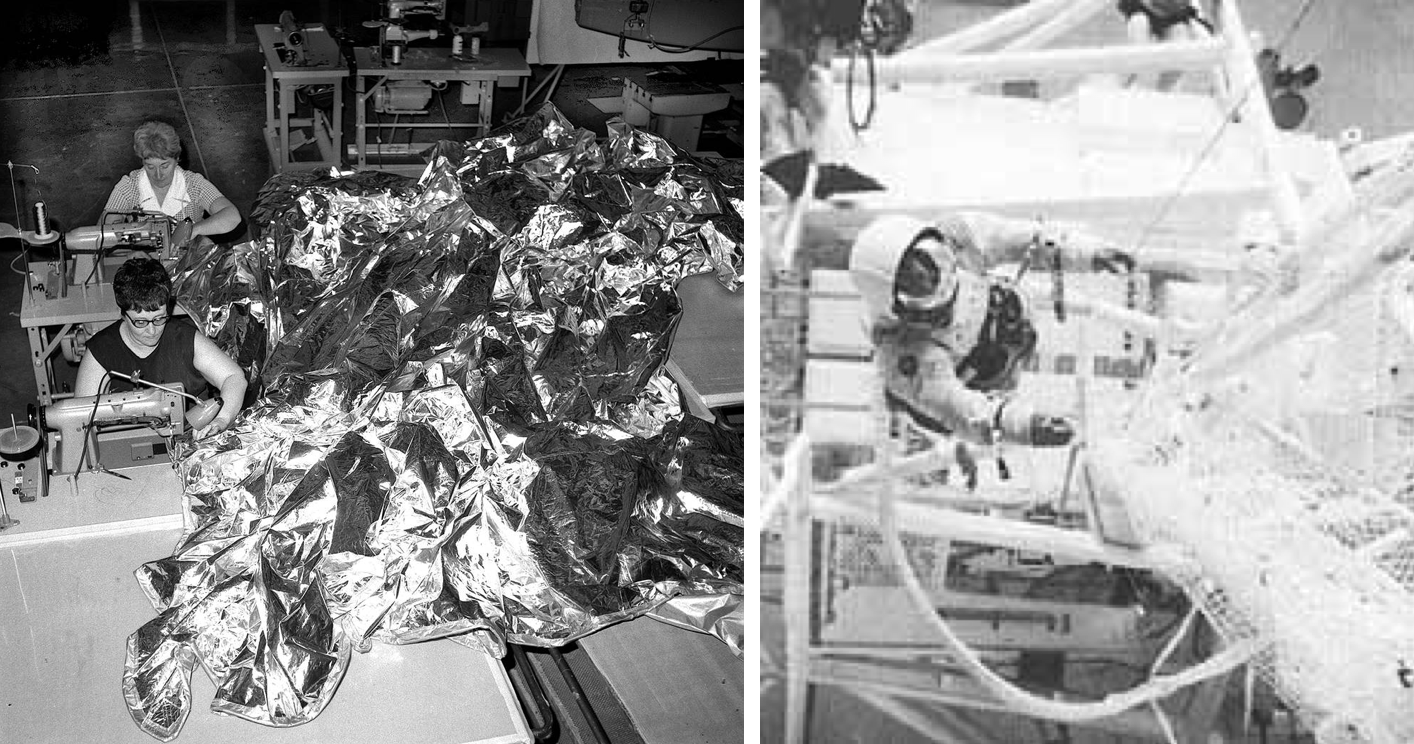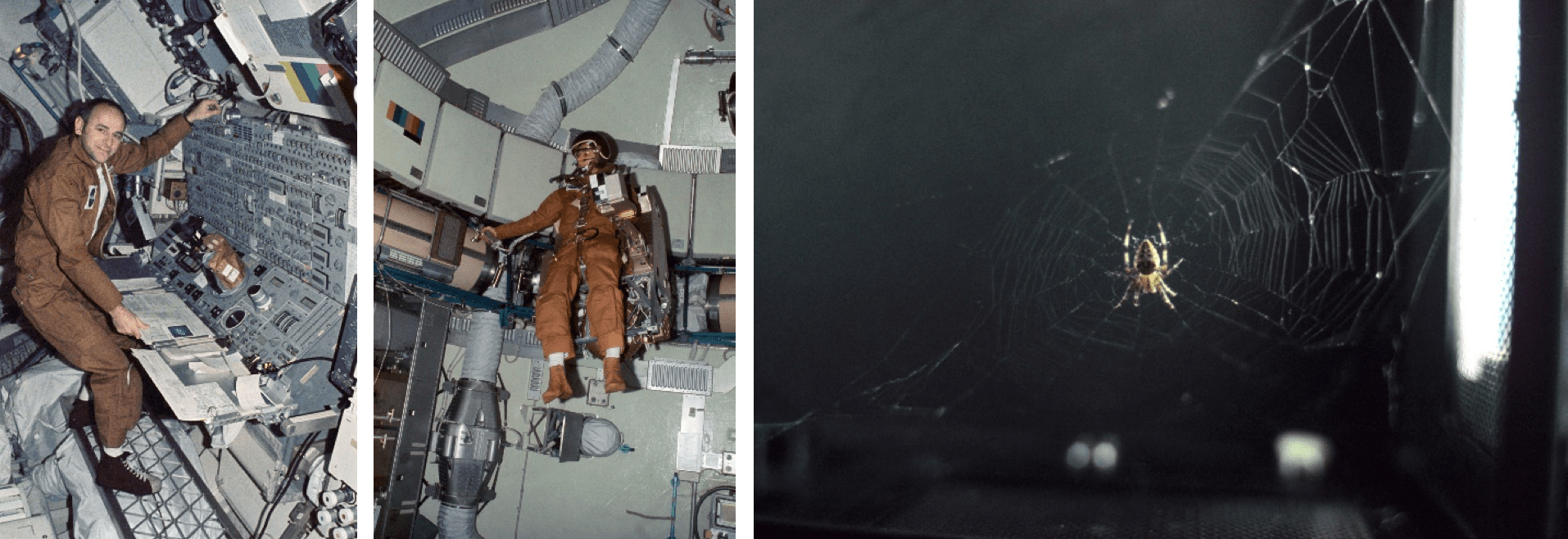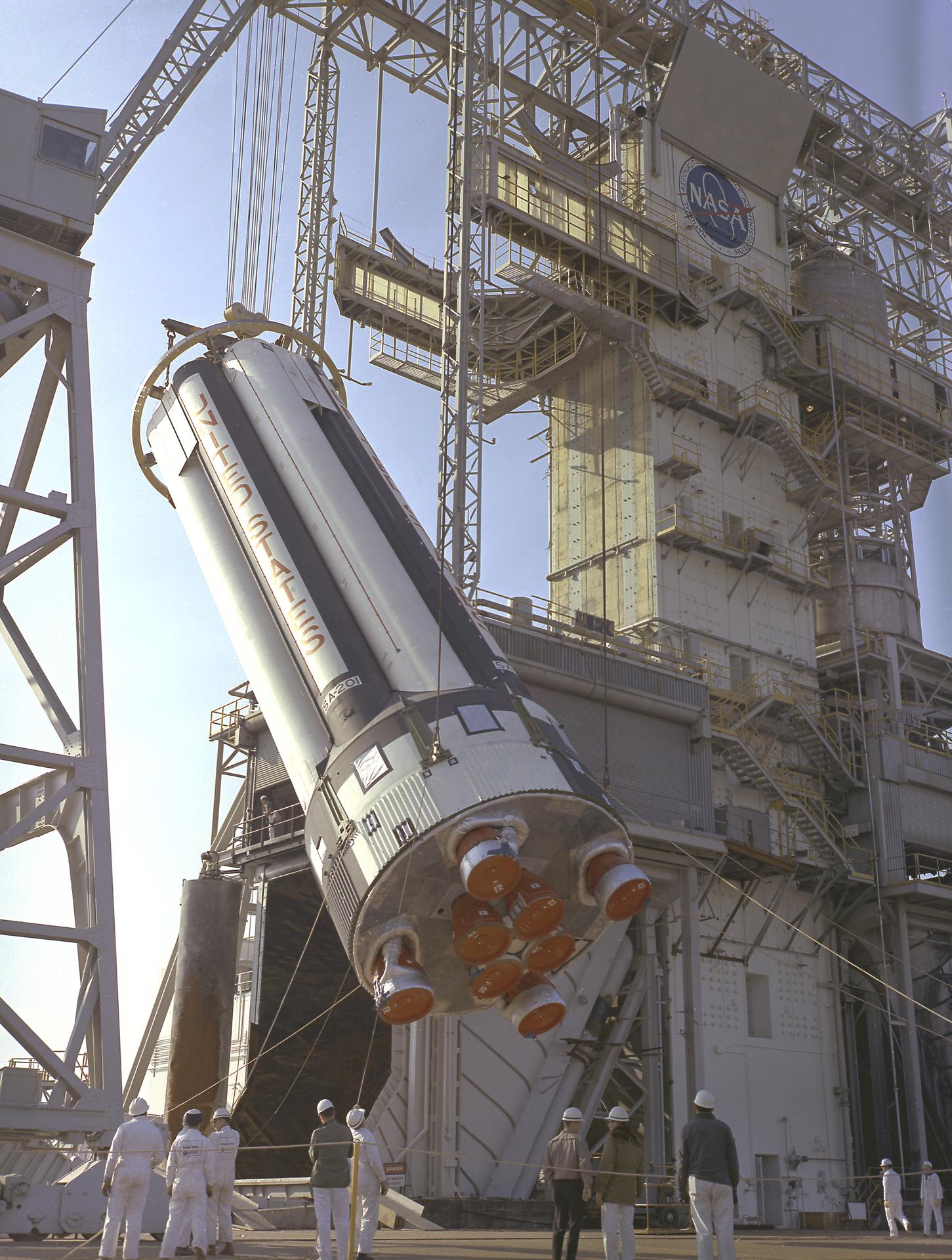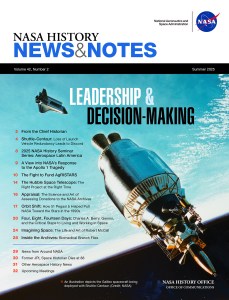When Skylab, America’s first space station, was damaged during its launch into space on May 14, 1973, losing its protection from solar radiation. As the station overheated, engineers at the Marshall Space Flight Center (MSFC) in Huntsville, Alabama, and the Manned Spacecraft Center (MSC), now the Johnson Space Center in Houston, quickly designed and built two sunshields to shade the station. NASA stowed both sunshades in the Command Module for launch with the first crew on May 25, who deployed the MSC-designed parasol the next day through a scientific airlock, dropping internal temperatures. NASA managers decided to defer deploying the second sunshield, the MSFC-designed twin-pole sunshade, until the second crew’s visit since it required a complex spacewalk to install, and that crew had time to train in the Neutral Buoyancy Simulator (NBS) at MSFC.
The Skylab 3 crew of Alan L. Bean, Owen K. Garriott and Jack R. Lousma launched from Kennedy Space Center on July 28, 1973, and docked with the space station 8 hours later. NASA managers delayed the spacewalk, originally planned for July 31, to deploy the twin-pole sunshade until August 6, as during the first few days of the mission, all three men suffered symptoms of space motion sickness and had to respond to spacecraft equipment malfunctions. Once the crew’s symptoms and the spacecraft’s problems resolved, the astronauts began operating science experiments and preparing for the spacewalk. During the 6-hour 31-minute extra vehicular activity (EVA), the longest Earth-orbital spacewalk up to that date, Garriott and Lousma deployed the twin-pole sunshade over the existing parasol and replaced film canisters in the Apollo Telescope Mount (ATM). Garriott assembled the two poles, each consisting of 11 5-foot segments, and passed them to Lousma who attached them to a base plate he had installed on a handrail. Lousma then unfurled the sunshade and swiveled it to cover the station. Internal temperatures aboard Skylab dropped almost immediately into a more comfortable range.
After the successful spacewalk, the Skylab 3 astronauts resumed a variety of science, technology and education experiments. The biomedical experiments focused on better understanding their physiological responses to long-duration space flight, including changes to their cardiovascular, neurovestibular and musculoskeletal systems and their overall metabolism and nutrition. The crew members continued to monitor selected ground sites using multispectral instruments in the Earth Resources Experiment Package (EREP) and to make solar and astronomy observations with the ATM. As a technology demonstration, the crew practiced flying the Astronaut Maneuvering Unit (AMU) inside the spacious dome of the Orbital Workshop. The AMU was a test demonstration of the Manned Maneuvering Unit, a jetpack-like device allowing an astronaut to freely operate outside a spacecraft and used later in the Shuttle program during satellite servicing missions. One of the student experiments that garnered much attention was the study of how two spiders, named Arabella and Anita, spun their webs in space—they seemed to adapt quite well.
On August 24, Garriott and Lousma stepped outside for the second EVA of the mission, replacing ATM film canisters and installing a cable for a new set of gyroscopes they mounted inside the station. The next day, the crew surpassed Skylab 2’s 28-day record for the longest human space flight. On August 27, the Skylab 3 crew sent a message to the ground as part of the formal dedication ceremony for the newly renamed Lyndon B. Johnson Space Center, formerly the Manned Spacecraft Center. NASA Administrator James C. Fletcher read the message at the ceremony in which the crew payed tribute to the 35th President, stating that their work aboard Skylab would not have been possible except for his “strong support and leadership in the Senate and in the presidency.”
For more insight into the Skylab 3 mission, read Owen Garriott’s and Jack Lousma’s oral histories.

































